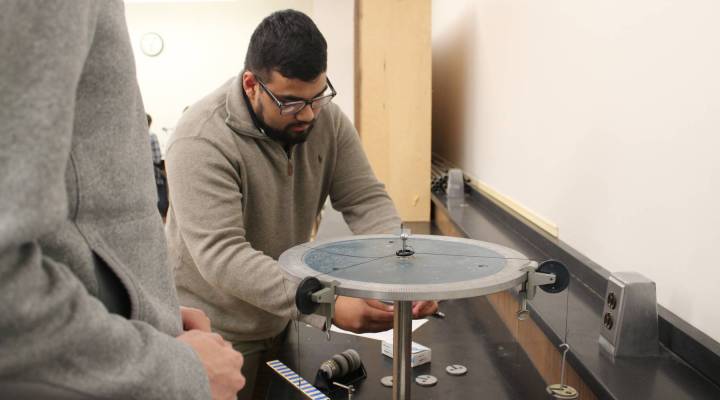
Maine’s university system tries to help with an impending labor shortage
Maine’s university system tries to help with an impending labor shortage

Inside an introductory physics class at the University of Maine at Machias, freshman Phillip Parent smiles as he tinkers with tiny metal weights.
Last year, Parent had his sights set on the engineering program at Maine’s flagship university, almost 100 miles away in Orono. Parent got in, but with a catch: The school told him that its engineering program had already filled up.
“I was kind of full of anger for a split second,” Parent said. “I was, like, ‘Why me? Why did I, out of all the people, get pushed back?’” Parent looked at online classes and other colleges. But a month later, a school counselor called and presented him with another offer.
Through a new partnership, Parent could take his first year of classes in Machias, then transfer to Orono to finish his degree. He was relieved. “It’s going to be a new start, a new chapter,” he said. “I’m going to go for it. It’ll be all OK, you know?”
This new path is part of a bigger initiative by Maine’s entire university system. Traditionally, the state’s seven public campuses have been independent of each other. But system Chancellor James Page said that with a giant workforce shortage on the horizon, that needed to change.
“And be, I think, more responsive to the economic, demographic, social challenges that the state was facing,” Page said.
The idea is that by combining resources, the system could help train more people for jobs — especially those in demand, like cybersecurity or nursing. Page said the new system offers courses to more students that are closer to where some of them live. Even in rural, Northern Maine.
“They can do more seamless transfer,” Page said “They can start here, go there. All of those pieces that are open.”
But this new partnership will only go so far to help solve the state’s labor problems. Maine’s Department of Labor estimates that by 2027, the state will need to recruit up to 5,000 workers per year to replace retiring baby boomers.
| American Futures: Welcome to Eastport, Maine |
| Could work-based learning help rural towns prepare students for a new economy close to home? |
There’s a lot happening in the world. Through it all, Marketplace is here for you.
You rely on Marketplace to break down the world’s events and tell you how it affects you in a fact-based, approachable way. We rely on your financial support to keep making that possible.
Your donation today powers the independent journalism that you rely on. For just $5/month, you can help sustain Marketplace so we can keep reporting on the things that matter to you.


















